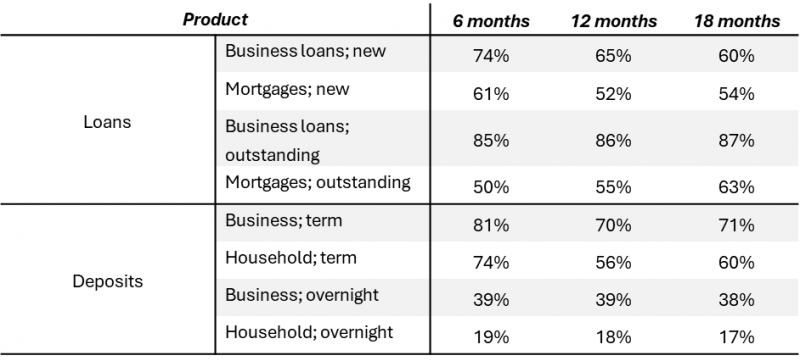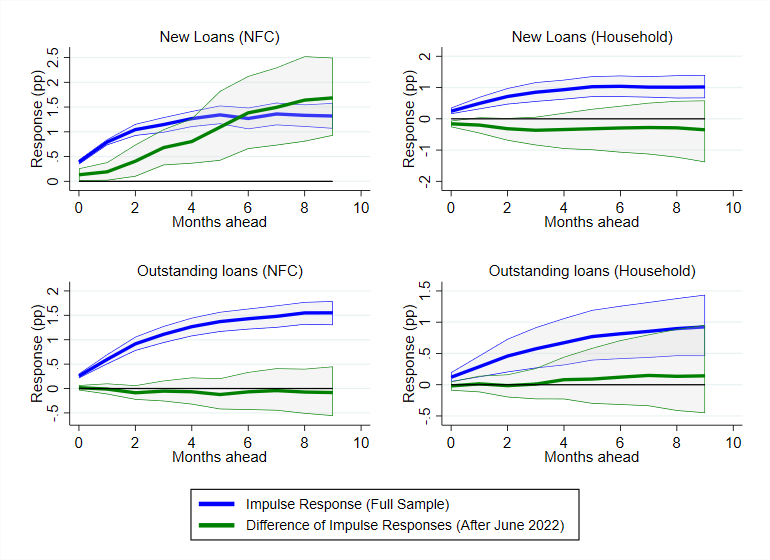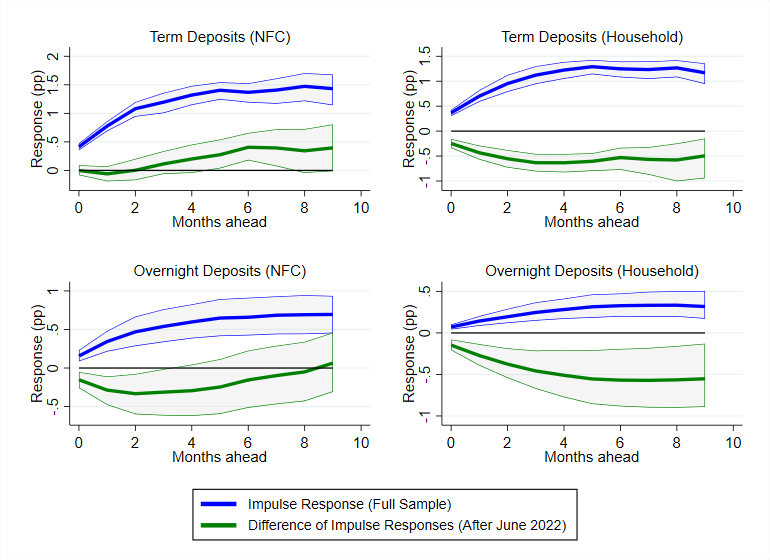References
Brissimis, Sophocles, Manthos Delis and Maria Iosifidi (2014). “Bank market power and monetary policy transmission.” International Journal of Central Banking, 10 (4): 173-214.
Byrne, David and Robert Kelly (2019). “Bank asset quality and monetary policy pass-through.” Applied Economics, 51 (23): 2501-2521.
Byrne, David and Sorcha Foster (2023). “Transmission of monetary policy: Bank interest rates pass-through in Ireland and the euro area”, Central Bank of Ireland Economic Letters Vol. 2023, No. 3.
Gambacorta, Leonardo, Jing Yang and Kostas Tsatsaronis (2014). “Financial structure and growth”, BIS Quarterly Review, March: 21-35
Holton, Sarah and Costanza Rodriguez-d’Acri (2018). “Interest rate pass-through since the euro area crisis.” Journal of Banking & Finance, Vol 96: 277-291.
Illes, Anamaria, Marco J. Lombardi and Paul Mizen (2019). “The divergence of bank lending rates from policy rates after the financial crisis: the role of bank funding costs.” Journal of International Money and Finance. Vol 93: 117-141.
Jordà, Òscar (2005). “Estimation and Inference of Impulse Responses by Local Projections.” American Economic Review, 95 (1): 161-182.
Kho, Stephen (2023). “Deposit market concentration and monetary transmission: evidence from the euro area.” DNB Working Paper Series No. 790
Lane, Philip (2023). “The Banking Channel of Monetary Policy Tightening in the euro area.” NBER Summer Institute 2023 Macro, Money and Financial Frictions Workshop. July 2023.
Messer, Todd and Friederike Niepmann (2023). “What determines pass-through of policy rates to deposit rates in the euro area?” FEDS Notes, Board of Governors of the Federal Reserve System. July 2023.







